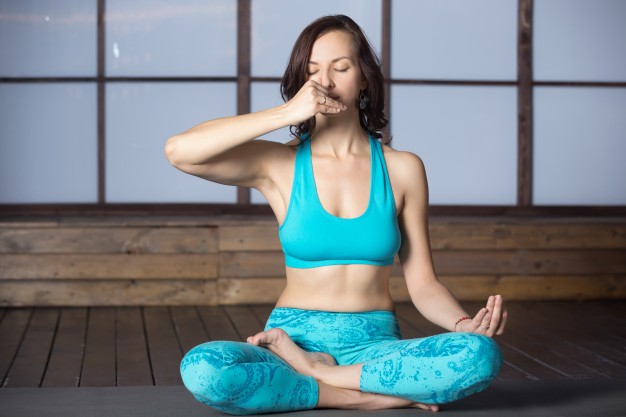Feeling stressed out? How many times have you heard, just breathe! In fact, when you look at many different relaxation techniques, whether it’s yoga or meditation, you will notice that there is a lot of focus on the types of breaths we take. In this blog we will talk about what research is finding when it comes to our breath and its connection to our emotions. We will also explore different breathing techniques as well as popular apps that might be helpful to incorporate into your lifestyle.
Pacemakers Explained
It turns out that there are two pacemaker cells in our body: one that is located in the heart and regulates our heartbeat and one that is in our brain that regulates our breath. The pacemaker in our heart cannot be controlled, it’s what we call involuntary, and it beats to its own rhythm. But the cluster of cells that regulate our breath are actually located in our brain, which sends signals to our spinal cord, over to our skeletal muscles, which then expands our lungs. Since these clusters of cells are in our brain, breathing can be voluntary or involuntary. You may find yourself breathing without thinking about it, but you can also take a deep breath or hold your breath when you want to. More and more studies that are coming out show that the breaths we take have a distinct effect on our emotions.
Think about it. Why does hyperventilating make us anxious and why does breathing slowly make us calmer?
The Connection Between Breath & Emotions
Much of this is still being discovered, but findings go back to research done in 1991 when a study co-authored by Jack Feldman, a professor of neurology at UCLA, found a cluster of neurons in the brainstem that was thought to be the important mechanism for the respiratory rhythm in mammals, including humans.
By identifying these neurons, scientists then looked at how breath, emotions, and alertness all worked together – and indeed, found a link between these neurons and alertness. These studies showed that there was a link between breath and emotions, and explained why when we breathe rapidly we are anxious and when we breathe slowly we are calm.
Other studies continued to reinforce this idea, including a study done by Pierre Phillipot. Phillipot and his team found that different emotions are linked to specific respiratory patterns. In Phillipot’s study, he asked participants to generate an emotion such as sadness, fear, and happiness and they looked closely at the different respiration patterns. After looking at these patterns, they found that every emotion had a distinct breath pattern. There was even a follow up study that had a different group of participants come to the lab and they were instructed on how to breathe. These participants were then asked to report how they felt – and they reported the same emotional outcome that was observed in the original group!
All of this is to say, we can use our breath to control how we feel. It can serve as a powerful tool in our emotional wellness toolkit.
Breathing Techniques
So how does one learn to do this? There are many different breathing techniques out there that you can try and practice. Finding a few that are easy to use throughout the day.
Here are a few that we like:
Alternate nostril breathing
Also known as nadi shodhana pranayama in Sanskrit, this breathing technique is great for relaxation.You should avoid this if you are feeling sick or congested.
- Get comfortable and relax
- Exhale and use your right thumb to gently close your right nostril
- Inhale through your left nostril and then close your left nostril with your right pinky and ring fingers
- Release your thumb and exhale out through your right nostril
- Inhale through your right nostril and then close this nostril
- Release your fingers to open your left nostril and exhale through this side
- Repeat up to 5 minutes and finish as you exhale on the left side
Resonant or coherent breathing
Resonant or coherent breathing is when you breathe at a rate of 5 full breaths per minute (or inhaling and exhaling for 5 counts).
- Get comfortable and relax
- Inhale for a count of 5
- Exhale for a count of 5
- Continue for a few minutes
Pursed lip breathing
This breathing technique can be practiced at any time and puts our attention on our breath.
- Get comfortable and relax
- Inhale slowly through your nose for 2 counts (keeping your mouth closed)
- Exhale slowly by blowing air through your pursed lips (or puckered lips) for a count of 4.
For more information on why breath is so important and other breathing techniques, check out our video on how to destress through breath: emotional wellness for international students.
Breathing Apps
In addition to incorporating breathing techniques into your daily routine, you can also look at downloading some apps that might also help to incorporate some of these exercises. Here are a few of our favorites:
The Breathwrk app takes your goals into consideration and develops a collection of breathing exercises to work on. Whether you are looking to relax, feel energized, or alleviate stress, this app will walk you through each exercise and send you daily reminders. Many of the exercises are free, but there are some features that do require a subscription (there is a 7-day trial to see whether it will work for you!).
The breathe2 app is another breathing app which focuses on the benefits of breathing exercises, and can also be used to relieve stress, improve focus and concentration, meditation, etc. There are a number of breathing exercises that you will learn, and it will help you to define each breathing cycle including inhale, exhale, hold.
There are an abundance of really good apps that can help those people looking to incorporate breathing into their daily lives in a more guided way. If you have a favorite app, let us know in the comments below.
While breathing exercises and awareness can be an important tool to maintaining your emotional wellness, it is important to take a holistic approach. In addition to breathing exercise, you may want to consider your exercise, diet, sleep, and your overall outlook to continue to promote and maintain your wellness.
For more, check out our emotional wellness page for international students.
Category: Health & Safety Abroad, Insurance Explained, International Student Health Insurance, Student Insurance, Study Abroad
Tags: alleviate stress, Alternate nostril breathing, breathing apps, breathing exercises, breathing techniques, Emotional wellness, emotional wellness for international students, international students, meditation, Pursed lip breathing, relaxation techniques, Resonant or coherent breathing, respiratory rhythm, yoga



